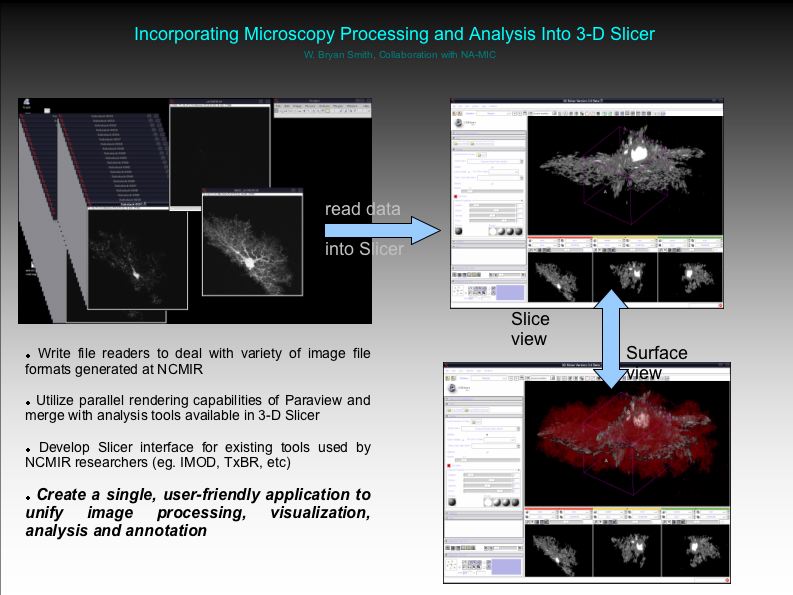Difference between revisions of "Slicer3:Fluorescence and Electron Microscopy Support"
From NAMIC Wiki
| Line 4: | Line 4: | ||
'''Background Info:''' Dendritic spines are the primary sites of excitatory neuronal communication in the brain. It is of fundamental interest to cellular neurobiologists to understand how the number, size, and shape of dendritic spines varies across brain regions, and as a function of experimental treatment within a given region. | '''Background Info:''' Dendritic spines are the primary sites of excitatory neuronal communication in the brain. It is of fundamental interest to cellular neurobiologists to understand how the number, size, and shape of dendritic spines varies across brain regions, and as a function of experimental treatment within a given region. | ||
| + | |||
| + | '''Links:''' | ||
| + | *[http://ncmir.ucsd.edu/~bryan/spines01.jpg A segmented spiny dendrite from cerebellum] | ||
| + | *[http://ncmir.ucsd.edu/~bryan/spineSample.jpg An example set of segmented spines] | ||
| + | |||
Revision as of 18:39, 31 May 2007
Home < Slicer3:Fluorescence and Electron Microscopy SupportBack to NA-MIC_Collaborations
Objective (Electron Microscopy): Analyze dendritic spine morphologies from electron tomographic reconstructions.
Background Info: Dendritic spines are the primary sites of excitatory neuronal communication in the brain. It is of fundamental interest to cellular neurobiologists to understand how the number, size, and shape of dendritic spines varies across brain regions, and as a function of experimental treatment within a given region.
Links:
Objective (Light Microscopy): Incorporate into Slicer our existing microscopy processing and analysis routines, currently being done in Matlab.
Progress: Reading 3-D TIFF images and generating surface models has been easily accomplished.
- 2007-04-26: Modifying Otsu Segmentation CLM to make use of Connected Components Image Filter.
- Works in Linux, not OS X.
- 2007-04-25: Discussion of relevant steps to accomplish initial astrocyte parsing project.
- Using EM Segmentation or 2-D histogram normalization approach to segment immunostaining data.
- Need 3-D erosion functionality for 'shrinking' astrocyte image volume to separate into two domains: an outer, "hull", and an inner, "core" domain in which differential protein distributions will be assessed.
- Can ParaView be used as visualization tool for surface rendering? Is it faster?
Key Investigators:
- NCMIR/UCSD: W. Bryan Smith, Mark Ellisman
- Isomics: Steve Pieper
Links:
- A sample dataset is available.
Screenshot:
